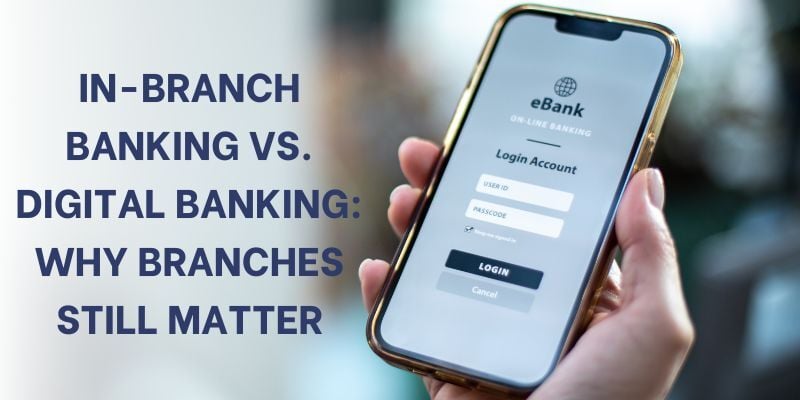Retail banking is like the foundation of our financial world. It’s where everyday people and small businesses find the support they need, from savings accounts to loans.
Retail banking isn’t just about numbers; it’s about empowering individuals and communities to manage their finances confidently.
Did you know that retail banking touches the lives of millions every day? It’s the backbone of our financial sector, providing essential services that keep our economy moving forward.
But in today’s changing times, retail banking faces its fair share of challenges. From keeping up with new technologies to navigating complex regulations, banks have their work cut out for them.
Yet, within these challenges lie opportunities for growth and innovation, especially in digital banking. With more people using online and mobile banking, there’s never been a more exciting time to work in retail banking.
Let’s look into the heart of retail banking, exploring the retail banking challenges and opportunities that shape our financial landscape. Together, we’ll look at how retail banking impacts the lives of millions and shapes the future of finance.
4 Challenges in Retail Banking
With the rapid changes in technology and consumer behavior, challenges in the retail banking industry are increasing. Banks need to help meet regulatory requirements, address cybersecurity risks, and adapt to evolving customer expectations. Let’s take a look.
1. Regulatory Compliance
Navigating regulatory changes poses a big challenge for retail banks. Keeping up with new rules and laws is challenging and can be costly. It’s not just about following the rules; it’s also about ensuring customers are protected and the bank stays on the right side of the law.
These challenges mean banks must invest time and money to stay compliant, which can be challenging in a competitive market. So, while rules are essential for keeping things fair and safe, they also add pressure to an already complex industry and increase retail banking challenges.
2. Technological Disruption
The rapid rise of fintech and digital banking presents a significant challenge and opportunity for retail banks. With more people turning to online and mobile banking, traditional banks must adapt to stay relevant.
Keeping pace with technological advancements is crucial to meeting customer expectations and competing in the digital age. Adopting digital banking solutions allows retail banks to enhance customer experiences and streamline operations.
It’s a balancing act between facing the challenges of technological disruption and seizing the opportunities it brings to innovate and thrive in the retail banking industry.
3. Changing Customer Expectations
Meeting changing customer expectations is a top challenge and opportunity for retail banks. Customers now expect personalized services and convenient banking options tailored to their needs.
This change in customers’ expectations means banks must offer a smooth experience across online, mobile, and in-person banking. Banks must adapt to this need for convenience and personalization to keep customers happy and bring in new ones.
Involving an omnichannel approach addresses customer expectations and presents an opportunity for banks to enhance customer satisfaction and loyalty in a competitive market. It’s all about staying ahead of the curve and delivering the banking experience customers want and deserve.
4. Economic Uncertainty
Navigating economic uncertainty presents significant retail banking challenges. During downturns, banks face the brunt of economic impacts, including decreased consumer spending and increased loan defaults.
Managing risks becomes vital in uncertain environments, requiring banks to adopt robust risk management strategies and maintain sufficient reserves. Additionally, fluctuations in interest rates and market volatility can further complicate banks’ financial decision-making.
Despite these challenges, proactive risk management can help mitigate potential losses and position banks to weather economic storms.
If banks remain vigilant and adaptable, they can manage economic uncertainty while safeguarding their financial stability and serving their customers effectively.
4 Opportunities in Retail Banking

Exploring opportunities within the retail banking sector holds immense promise for growth and innovation. Let’s look at these together.
1. Digital Transformation
Adopting digital transformation is critical for retail banks to make banking more accessible and enjoyable for customers.
They’re using technology to create better experiences, such as simplifying online and mobile banking and adding self-service kiosks and cash deposit machines (CDMs) for convenience.
With these changes, customers can do more on their terms, like checking balances or depositing cash whenever they want. It’s all about using technology to give customers what they need when they need it, making banking smoother and more accessible for everyone.
Leveraging Retail Banking Solutions: A Case Study of United Bank Limited’s Digital Transformation Journey
United Bank Limited (UBL) got on board a digital transformation journey, partnering with Wavetec to address retail banking challenges and opportunities. Facing issues of customer footfall and long waiting times across its 291 branches, UBL implemented Wavetec’s Branch Transformation Solution.
This innovative setup included queue management systems and digital signage, revolutionizing the customer experience. UBL tackled challenges by leveraging technology-enhancing customer-centric approaches and capitalizing on growth opportunities.
The solution enabled UBL to organize customer flows efficiently, enhance customer engagement, and improve service quality. UBL optimized branch performance and customer satisfaction with real-time monitoring and data analytics.
2. Data Analytics and Personalization
Making the most of customer data is a big trend in retail banking, helping banks offer products and services that fit each customer just right. Banks can use data analytics to create tailored experiences, like suggesting the perfect savings account or loan based on a customer’s financial habits.
This not only tackles the retail banking challenges of managing heaps of data but also seizes the opportunities to build stronger customer relationships, thus enhancing customer engagement.
It’s a win-win situation for banks, as leveraging customer data overcomes retail banking challenges and propels them forward in the transforming industry, ensuring they stay ahead of the curve and effectively meet evolving customer needs.
3. Innovation in Product Offerings
Introducing innovative financial products is crucial to staying competitive in retail banking and positively looking at the challenges and opportunities.
Banks constantly explore new ways to meet customer needs and preferences through unique savings accounts, investment options, or payment solutions.
Additionally, collaborating with fintech startups offers banks access to cutting-edge technologies and fresh ideas, enabling them to develop innovative products more efficiently.
With innovation in product offerings, retail banks can differentiate themselves in the market, attract new customers, and retain existing ones.
4. Focus on Financial Inclusion
Focusing on financial inclusion is a pivotal strategy for retail banks, aiming to extend their services to underbanked and unbanked populations.
By reaching out to these marginalized groups, banks can empower individuals and communities with access to essential financial services, such as savings accounts and loans.
Also, creating products and services that fit the needs of people who need access to many banking options is essential for including more people in the financial system.
Retail banks fulfill their social responsibility through these initiatives and tap into new market segments, adding to sustainable growth and societal progress.
5 Strategies to Address Challenges and Seize Opportunities

Implementing strategic approaches is essential to address challenges and seize opportunities in retail banking. Here are the opening lines for five strategies:
1. Investment in Technology and Infrastructure
Retail banks should invest in technology and infrastructure to handle challenges and seize opportunities in the industry. By updating their systems and using new technologies, banks can improve operations, make customers happier, and stay ahead of the competition.
Moreover, robust technological infrastructure enables banks to address regulatory requirements more efficiently while paving the way for future growth and innovation.
2. Enhancing Regulatory Compliance Mechanisms
Given the challenges they face, strengthening regulatory compliance mechanisms is a top priority for retail banks. By implementing robust compliance frameworks and leveraging technology, banks can ensure adherence to regulations while minimizing risks and penalties.
Additionally, enhancing compliance mechanisms builds trust with customers and regulators, laying a solid foundation for sustainable growth and success in the banking sector.
3. Emphasizing Customer-Centric Approaches
Putting customers first is critical for retail banks to handle challenges and maximize opportunities. By focusing on what customers want and need, banks can make them happier, keep them coming back, and ensure they stay with the bank for a long time.
This customer-centric focus also drives innovation as banks develop tailored products and services that resonate with their target audience, ultimately strengthening their competitive position in the market.
4. Collaboration and Partnerships with Fintech Companies
Collaborating with fintech companies presents retail banking challenges and opportunities for innovation and growth.
When partnering with fintech firms, banks can leverage their expertise and technology to develop innovative solutions that address challenges and meet evolving customer demands.
These collaborations also enable banks to access new markets, expand their service offerings, and enhance their competitive edge in the industry.
5. Continuous Monitoring of Market Trends and Customer Preferences
Monitoring market trends and customer preferences is essential for retail banks to stay ahead of the evolving industry landscape.
Banks can anticipate challenges, identify opportunities, and adapt their strategies by staying informed about emerging trends and evolving customer behaviors.
This proactive approach ensures that banks remain relevant and responsive to market dynamics, driving sustained growth and success in the retail banking sector.
Final Words
To conclude, navigating the dynamic landscape of retail banking challenges and opportunities requires strategic foresight, adaptability, and a customer-centric approach.
As retail mechanisms grow in response to technological advancements, regulatory requirements, and shifting customer preferences, investing in technology, enhancing regulatory compliance mechanisms, and developing strategic partnerships with fintech companies are crucial strategies.
By prioritizing customer satisfaction, innovation, and continuous market monitoring, banks can effectively address challenges while seizing opportunities for growth and differentiation.
When adopting change and innovation, retail banks can navigate challenges and capitalize on opportunities to drive sustainable success in the retail banking industry.
BOOK A FREE DEMO
![Top 10 Customer Experience Trends in Banking [2025] 3 top-10-customer-experience-trends-in-banking](https://www.wavetec.com/wp-content/uploads/2025/04/top-10-customer-experience-trends-in-banking.jpg)




